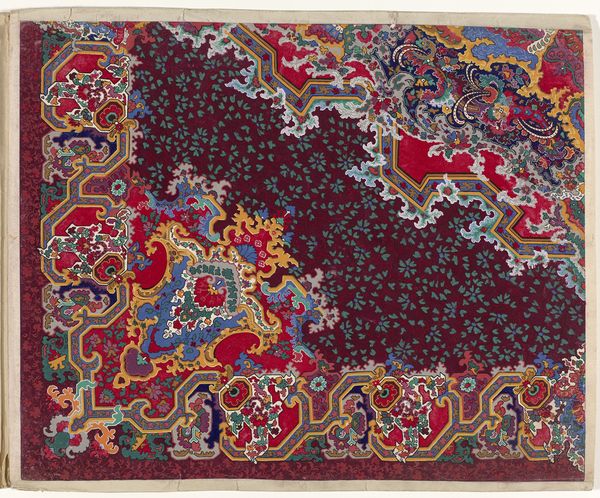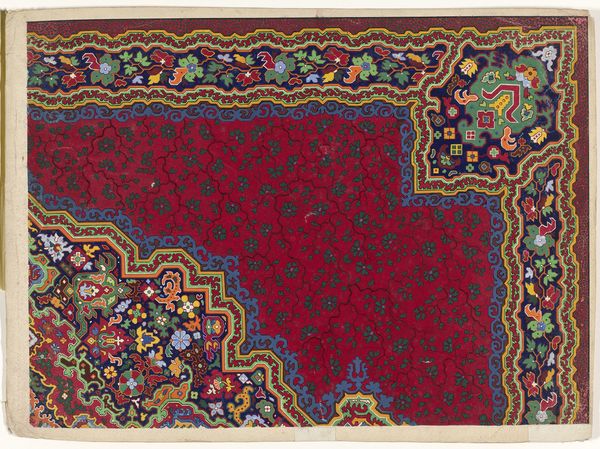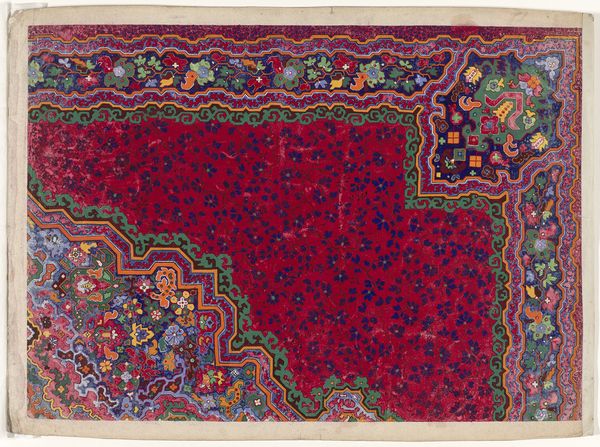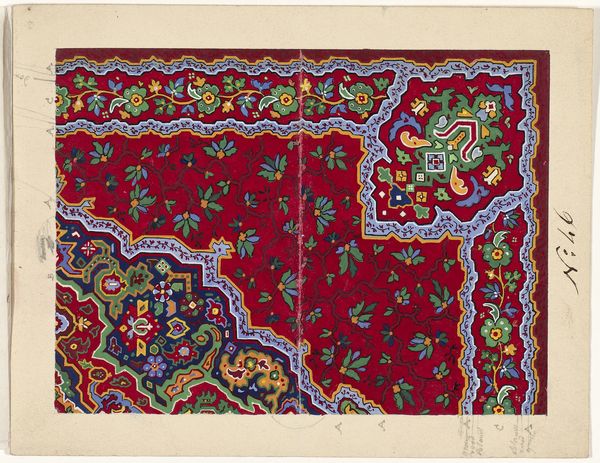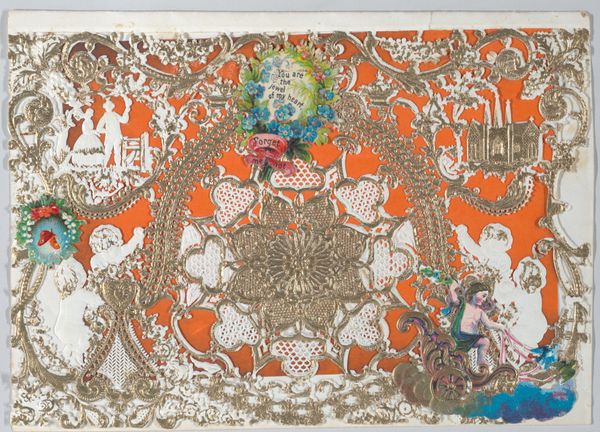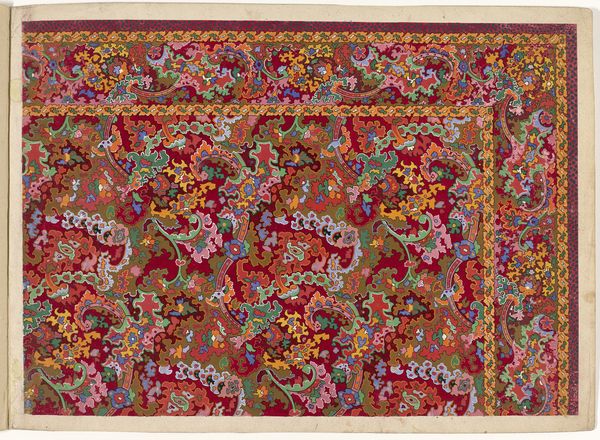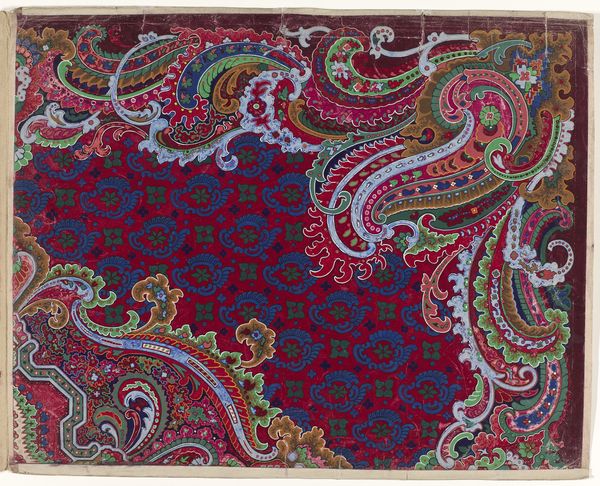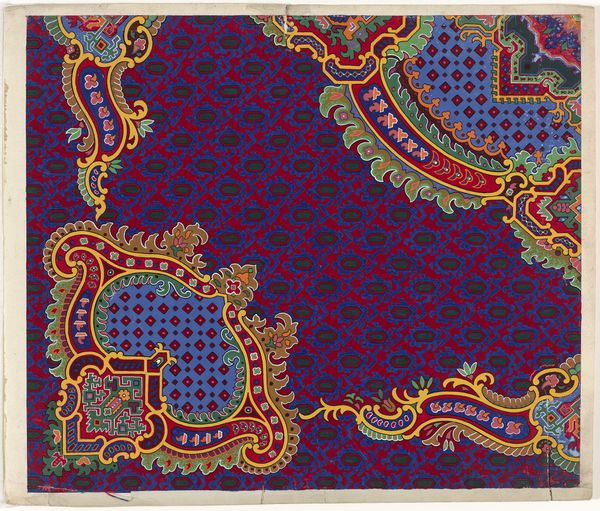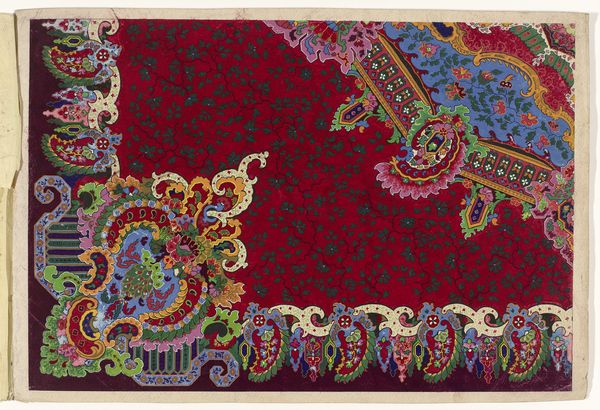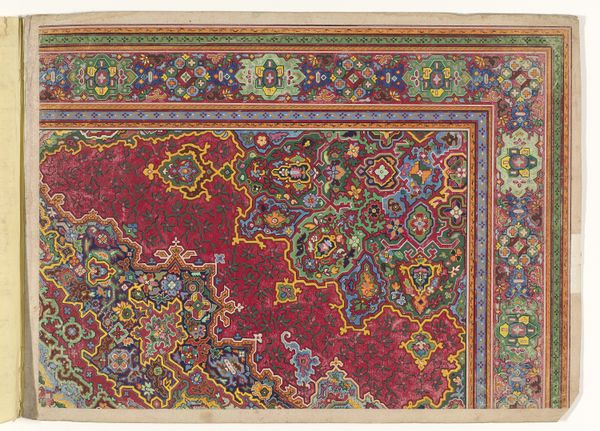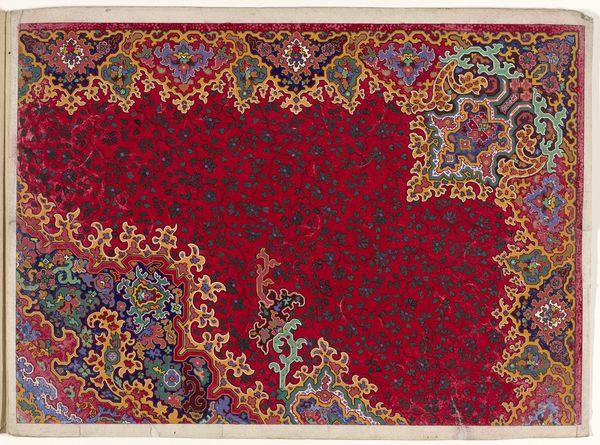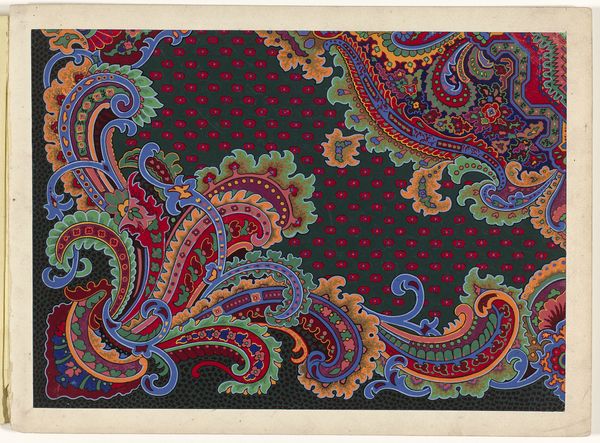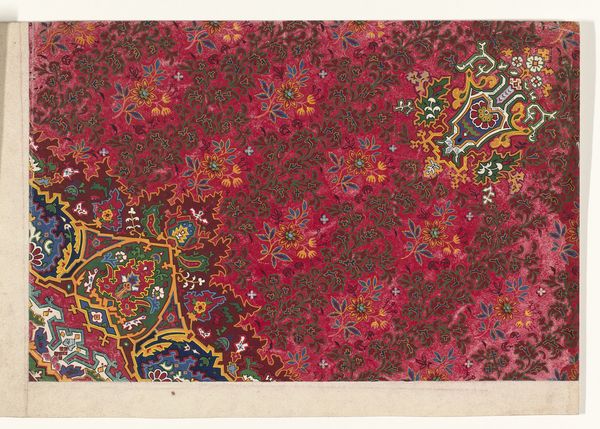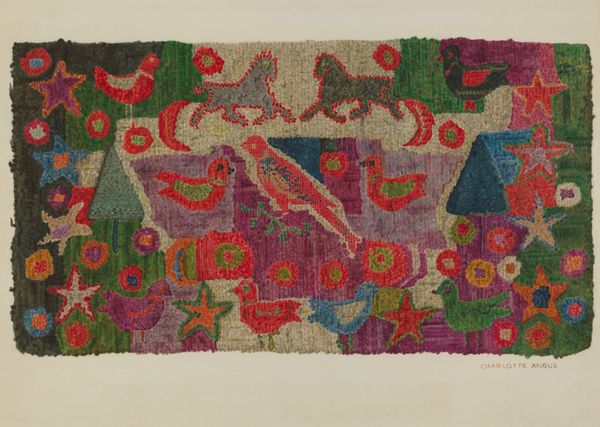
drawing, paper
#
pattern heavy
#
drawing
#
natural stone pattern
#
naturalistic pattern
#
organic
#
paper
#
geometric pattern
#
pattern background
#
abstract pattern
#
organic pattern
#
geometric
#
flower pattern
#
pattern repetition
#
decorative-art
#
layered pattern
Dimensions: height 288 mm, width 393 mm
Copyright: Rijks Museum: Open Domain
Editor: This is "Ontwerp voor een tapijt," a carpet design created around 1854-1864. The medium is listed as mixed media. There's a fascinating blend of geometric and organic forms. It's so intricate! How do you interpret this work? Curator: I see it as a powerful statement embedded in the socio-political context of the 19th century. The emphasis on craft, visible in the intricate details, is likely a reaction against industrialization. Doesn't it remind you of the Arts and Crafts movement, which sought to reclaim the value of handmade goods against mass production? Editor: It definitely does. The handmade feel is very apparent. How would you say it speaks to gender and identity, though? Curator: The act of textile production, often relegated to the domestic sphere and associated with women's work, is elevated here. It challenges the art world’s rigid hierarchy that often undervalued crafts. The "anonymous" label on this piece speaks volumes too. Does it suggest a deliberate obfuscation of the artist’s identity or maybe that the artist's identity was deemed unimportant, secondary to the product itself? The layers of the patterns might be visual echoes of complex identities, each color and motif a coded narrative. Editor: That makes me see the geometric and organic pattern as representative of the intersection of industrial progress and nature. What do you mean when you say coded narrative? Curator: Consider the patterns: floral motifs often symbolize femininity. These could also carry cultural meanings depending on the artist’s background and social milieu. The visual elements of the composition encode social status, gender roles, and resistance, all within what appears on the surface as a decorative object. How empowering that a statement is made through the design! Editor: I had not thought about textile art being subversive. I'll definitely carry that perspective as I continue to explore and view art! Curator: Absolutely, keeping such a viewpoint encourages a broader, more equitable understanding of art history!
Comments
No comments
Be the first to comment and join the conversation on the ultimate creative platform.
